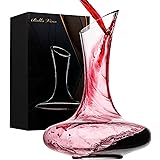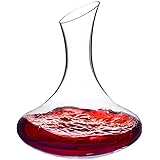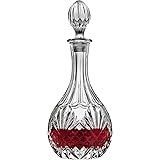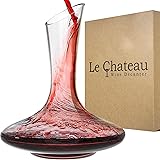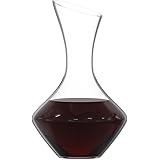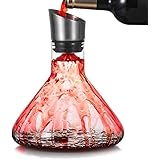Choosing Your Perfect Wine Starter Kit for Home Winemaking
There is a unique satisfaction derived from crafting something with your own hands, and for many, that joy extends to the realm of home winemaking. The journey often begins with a single question: “What equipment do I actually need?” Perhaps you have watched the insightful video above, which expertly breaks down the distinctions between various wine starter kits. This guide aims to build upon that valuable information, offering a deeper dive into why each component is essential and how to select the ideal starter kit to embark on your winemaking adventure.
Embarking on the winemaking journey can seem daunting, with shelves full of specialized equipment. However, with the right wine making starter kits, the process becomes significantly more approachable. These kits are meticulously assembled to provide everything necessary for a successful first batch, simplifying initial decisions and ensuring a smooth start. The fundamental pieces of equipment are designed to guide the beginner through each crucial stage, from fermentation to bottling, laying a solid foundation for future endeavors.
Understanding the Core Essentials for Home Winemaking Success
Every successful winemaking endeavor, regardless of its scale, relies on a few core pieces of equipment. The video highlighted several key items, and understanding their individual functions is paramount. These tools are not just accessories; they are critical for monitoring the fermentation process, maintaining sanitation, and ultimately ensuring the quality and safety of your homemade wine.
A primary fermenter is where your wine kit’s juice or concentrate, water, and yeast first combine to begin fermentation. It is typically a large food-grade bucket or carboy. Following this, secondary fermentation often involves transferring the wine to another container to allow it to clear and age. Essential for these steps are precise measurement tools and effective sanitization agents, which collectively contribute to the crafting of palatable wine.
The Premium Wine Starter Kit: Your Foundational Set
The premium home winemaking kit represents the most basic yet comprehensive entry point into the hobby. It is equipped with the foundational tools required for primary fermentation and basic monitoring. Many beginners find this kit to be an excellent starting point, providing enough equipment to produce a drinkable wine while keeping the initial investment manageable.
A typical premium kit includes a graduated bucket with a lid, an airlock, and a grommet. The graduation marks on the bucket are crucial for accurately measuring water additions. The airlock, essential for preventing oxygen ingress while allowing fermentation gases to escape, ensures a clean, anaerobic environment for the yeast. Additionally, a large spoon or paddle is supplied for stirring and aerating the must, which is the unfermented grape juice, at the initial stages.
The inclusion of both a thermometer (0-100 degrees Celsius) and a hydrometer is a hallmark of quality in these starter kits. As was emphasized in the video, these two instruments are often considered the most important pieces of equipment. A thermometer is used for monitoring fermentation temperature, which significantly impacts yeast activity and flavor profiles. A hydrometer, on the other hand, measures the specific gravity of the must, allowing winemakers to track the conversion of sugar to alcohol and determine the wine’s final alcohol content.
Furthermore, a no-rinse sterilizer, typically a 100-gram tub, is provided to ensure all equipment is meticulously cleaned before use. This step is non-negotiable in winemaking, as even microscopic contaminants can ruin a batch. Finally, a siphon facilitates the transfer of wine, whether into bottles or another container, minimizing exposure to oxygen and sediment. While this kit is basic, it enables the creation of quality wine if proper techniques are diligently followed.
Stepping Up with the Superior Wine Starter Kit
For those looking to enhance their winemaking process with the ability to perform a secondary transfer, the superior winemaking equipment for beginners becomes a more attractive option. This kit builds upon the premium offering by adding a crucial component: a dedicated 25-litre fermenter, often with a black cap and double handles. The introduction of a second fermenter opens up new possibilities for improving wine quality and clarity.
The primary benefit of having a second fermenter is the ability to rack the wine. Racking involves carefully siphoning the wine off the sediment (lees) that collects at the bottom of the primary fermenter after the initial vigorous fermentation subsides. This process helps to prevent off-flavors from developing due to prolonged contact with spent yeast and other solids. It also aids in clarifying the wine, resulting in a cleaner, brighter final product.
Using a separate fermenter for secondary fermentation is widely recommended by experienced winemakers. It provides a more stable environment for the wine to age and develop without interference from active fermentation byproducts. This incremental investment can lead to a noticeable improvement in the overall quality and stability of your homemade wine, making the superior kit a popular choice for those serious about their craft.
Embracing Quality with the Luxury Wine Starter Kit
The luxury best wine starter kits are designed for the discerning winemaker who prioritizes clarity, precision, and the production of premium quality wines, such as those made from World Vineyard, Vintners, or Selection concentrates. This kit elevates the winemaking experience by including a clear 23-litre fermenter, complete with a bung and airlock, along with an indispensable trial jar.
The clear fermenter is a significant upgrade. Its transparency allows winemakers to visually monitor the fermentation process, observe the settling of sediment, and assess the clarity of the wine without disturbing the environment. This visual feedback is invaluable for understanding the different stages of winemaking and making informed decisions about when to rack or bottle. The slightly smaller 23-litre capacity is often ideal for standard wine kit volumes, ensuring minimal headspace which can reduce oxidation risks during aging.
Another distinguishing feature of the luxury kit is the inclusion of a trial jar. While a hydrometer can be used directly in the fermenter (or its case), a trial jar makes taking specific gravity readings much easier and more accurate. This slim, tall cylinder is perfectly sized for the hydrometer, requiring less wine to take a reading and allowing for a more precise measurement without the fiddliness associated with using the hydrometer’s protective case. This convenience becomes particularly appreciated when multiple readings are required over the fermentation period.
For those committing to crafting higher-quality wines, which often involve longer fermentation and aging periods, the features of the luxury kit are considered essential. The enhanced control and ease of monitoring provided by the clear fermenter and trial jar contribute significantly to achieving professional-level results in home winemaking.
Why Specific Equipment Matters: Deep Dive into Hydrometers and Thermometers
As repeatedly emphasized, the hydrometer and thermometer are arguably the two most critical pieces of equipment in any wine making supplies kit. Their importance cannot be overstated, as they provide the data necessary to control and understand the fermentation process, ultimately determining the success of your batch.
A thermometer’s role is to ensure that the yeast is fermenting within its optimal temperature range. Most wine yeasts perform best between 18-24°C (65-75°F). Temperatures too low can cause sluggish fermentation, potentially leading to stuck fermentation or off-flavors. Conversely, temperatures too high can stress the yeast, producing undesirable fusel alcohols or preventing proper yeast flocculation, leading to hazy wine. Consistent temperature monitoring allows for adjustments, such as moving the fermenter to a warmer or cooler spot, to maintain ideal conditions.
The hydrometer, on the other hand, is the winemaker’s primary tool for tracking sugar conversion. By measuring the initial specific gravity (Original Gravity or OG), the potential alcohol content of the wine can be estimated. Subsequent readings, known as Current Gravity (CG), indicate how much sugar has been consumed by the yeast. When the hydrometer reading stabilizes at or below 0.998, it typically signifies that fermentation is complete, and most of the sugar has been converted into alcohol. Without a hydrometer, guessing when fermentation is complete is a risky business, often leading to either unfinished, sweet wine or accidental bottle explosions if bottled too early.
Some sources might suggest these tools are optional to save costs, but the risk of ruining a batch or producing subpar wine without them is substantial. Investing in a kit that includes these instruments, like all the kits discussed here, is a wise decision for any aspiring winemaker, ensuring control and consistency in the winemaking process.
The Strategic Advantage of Wine Starter Bundles
Once you have selected your ideal wine starter kits, the next logical step is to acquire a wine kit itself—the concentrate or juice that will become your wine. Many suppliers offer starter pack bundles, which strategically combine a chosen equipment kit with a specific wine kit at a special, reduced price. This bundled approach provides several significant advantages for the novice winemaker.
Firstly, buying a bundle is typically more cost-effective than purchasing the equipment and wine kit separately. These savings can be substantial, allowing beginners to allocate more of their budget towards higher-quality wine kits or additional accessories down the line. It represents an efficient way to get everything needed to start winemaking immediately, often packaged conveniently for easy transport.
Secondly, bundles simplify the decision-making process. For new winemakers, navigating the vast array of equipment and wine kit options can be overwhelming. A bundle removes this complexity by offering a curated package, ensuring compatibility between the equipment and the wine kit. This integrated approach means less time spent researching individual components and more time dedicated to the exciting process of crafting wine.
Finally, a bundle ensures you have all the necessary components from day one, eliminating the frustration of realizing a crucial item is missing mid-process. It provides a complete solution, allowing you to dive straight into the winemaking process with confidence and all the required elements at your fingertips.
Making Your Choice: Which Wine Starter Kit is Right for You?
The selection of the appropriate wine starter kits ultimately depends on your aspirations and budget. If you are primarily interested in a basic, cost-effective entry into the hobby, the premium kit offers all the fundamental tools to get started and produce enjoyable wine. It’s ideal for those who want to dip their toes in without a large initial investment.
For winemakers who foresee themselves becoming more engaged and appreciate the benefits of secondary fermentation for clearer, potentially better-aged wines, the superior kit represents a logical step up. The addition of a second fermenter significantly enhances the quality control aspects of winemaking. This kit balances affordability with improved functionality, catering to a broader range of introductory winemaking projects.
Ultimately, for those committed to crafting high-quality wines and who value precision, clarity, and ease of monitoring, the luxury kit is the recommended choice. Its clear fermenter and trial jar provide an unparalleled level of control and insight into the winemaking process, making it suitable for more advanced wine kits and producing results that can rival commercial offerings. Each of these is designed to support different levels of engagement, ensuring a fulfilling and successful winemaking experience.


